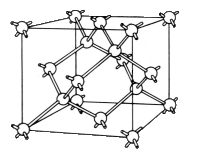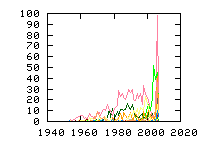« Previous
1
Next »
(4 hits, 1/1)
Showing
10, 25, 50, 100, 500, 1000, all papers per page.
Sort by:
last publication date,
older publication date,
last update date.
- 1. Appl. Phys. Lett. 88, 253504 (2006) , “Single silicon vacancy-oxygen complex defect and variable retention time phenomenon in dynamic random access memories”, T. Umeda, K. Okonogi, K. Ohyu, S. Tsukada, K. Hamada, S. Fujieda, and Y. MochizukiThe variable retention time phenomenon has recently been highlighted as an important issue in dynamic random access memory (DRAM) technology. Based on electrically detected magnetic resonance and simulation studies, we suggest that a single Si vacancy-oxygen complex defect is responsible for this... (Read more)
- 2. Eur. Phys. J. Appl. Phys. 27, 13-19 (2004) , “Measurement of process-induced defects in Si sub-micron devices by combination of EDMR and TEM”, T. Umeda, A. Toda, Y. MochizukiProcess-induced defects are a serious issue for modern sub-micron Si LSIs. To characterize such defects, two different techniques are useful: electrically detected magnetic resonance (EDMR) and transmission electron microscope (TEM), which can detect small (point) and extended defects, respectively. We applied EDMR and TEM to the issue of defect-induced leakage currents in dynamic-random-access memory (DRAM) cells. For our DRAM samples (a 0.25- μm-rule series), although TEM showed no extended defects, EDMR successfully detected two types of point defects: V2+O x (Si divacancy-oxygen complexes) and larger Si vacancies (at least larger than V6). We confirmed that these defects are the source of DRAM leakage currents. The observed defects were formed by ion implantation processes, but were more thermally stable than those in bulk Si crystals. The origins of this enhanced stability are attributed to the presence of oxygen atoms and a strong mechanical strain in LSIs. To clarify the origin of the complicated strain in LSI structures, we can directly measure the local-strain distribution in DRAM samples by means of convergent-beam electron diffraction (CBED) using TEM, which provides us with a valuable hint for understanding the formation mechanism of process-induced defects. (Read more)
- 3. J. Appl. Phys. 94, 7105-7111 (2003) , “Electrically detected magnetic resonance of ion-implantation damage centers in silicon large-scale integrated circuits”, T. Umeda, Y. Mochizuki, K. Okonogi, K. HamadaWe used electrically detected magnetic resonance to study the microscopic structure of ion-implantation-induced point defects that remained in large-scale Si integrated circuits (Si LSIs). Two types of defects were detected in the source/drain (n+-type) region of... (Read more)
- 4. J. Vac. Sci. Technol. B 16, 2134-2153 (1998) , “What can electron paramagnetic resonance tell us about the Si/SiO2 system?”, P. M. Lenahan, J. F. Conley, Jr.Electron paramagnetic resonance (EPR) measurements of Si/SiO2 systems began over 30 years ago. Most EPR studies of Si/SiO2 systems have dealt with two families of defects: Pb centers and E centers. Several variants from each group have... (Read more)BPSG PSG Si SiO2| EDMR EPR electric-field-effect electrical-meas. etching gamma-irradiation| 10B 11B 1H 29Si 2D 31P BOHC Boron Deuterium E' E'-delta H(I) Hydrogen Nb Nitrogen Oxygen P1 P2 P4 POHC Pb Pb0 Pb1 Phosphorus Silicon amorphous complex(=3) dangling-bond device dielectric interface pair(=2) | last update: Takahide Umeda
« Previous
1
Next »
(4 hits, 1/1)
Showing
10, 25, 50, 100, 500, 1000, all papers per page.
Sort by:
last publication date,
older publication date,
last update date.
All papers (3399)
Updated at 2010-07-20 16:50:39
Updated at 2010-07-20 16:50:39
(view as: tree
,
cloud
)
| 1329 | untagged |
Materials
(111 tags)
Others(101 tags)
Technique
(46 tags)
Details
(591 tags)
Bond(35 tags)
Defect(interstitial)(18 tags)
Defect(vacancy)(15 tags)
Defect-type(19 tags)
Element(65 tags)
Energy(8 tags)
Isotope(56 tags)
Label(303 tags)
Sample(17 tags)
Spin(8 tags)
Symmetry(15 tags)

